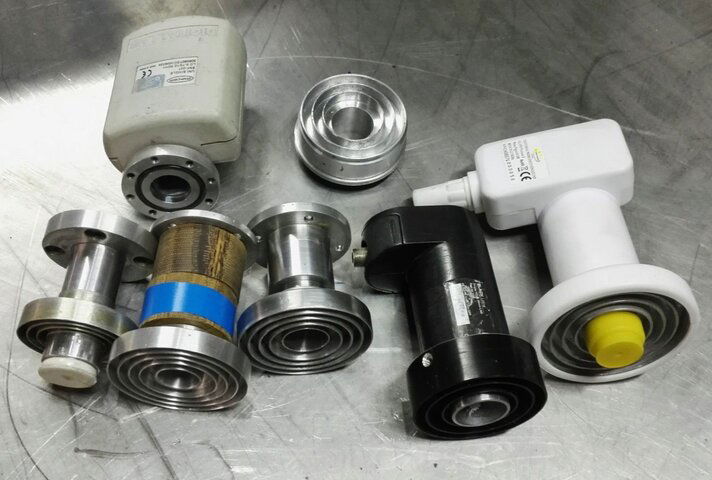Oh yeah Seeing as how my C Band LNB is sticking out so much will I have to mount a Ku closer to the throat or do they focus further back?
And about universal vs standard. There are a few dead links here on the subject and YouTube is full of those infomercial speaking Brits and broken English Hindi dudes. Annoying.
Will a universal do everything a standard will and more? Or are they 2 different animals?
Lets say I fashioned up a tap to monitor Inmarsat on my SDR. Or other cool things like that. Would a universal be a plus or a big PITA?
I think Inmarsat might be Ka? or maybe still some L-Band like in the 90's?
As for standard vs universal, well I don't know how much you already know, so i'll go from the basics, no offense intended.
the Ku band used by telecommunication satellites is 10.7 to 12.750 GHz. Most of the world use the whole band. But in North America (USA, Canada) we mostly use the upper half, and to make things even worse, the upper quarter (12.2 to 12.75) is dedicated to high-power direct-to-home services like Dish Network, DirecTV, Bell and Shaw Direct. The remaining quarter (11.7 to 12.2 GHz) is used by medium-power satellites, and that's where most of the FTA channels are and that band is often referred to as the "Standard Ku band" by North American enthusiasts. Note that there are exceptions, with some Shaw Direct Transponders in the lower half of the Ku band on 107W.
The rest of the world mostly uses the entire Ku band. That includes Mexico and the Caribbean.
Now, the FTA receivers can tune in frequencies between 950 and 2050 MHz, obviously that does not match the frequencies of the Ku band, and also that's a range of only 1100 MHz while the Ku band is 2050 MHz wide. The trick? Frequency translation, using a Local Oscillator (LO) in the LNB(F). And the other trick? using 2 different, switchable LOs to cover the entire Ku band.
A universal LNB uses LOs of 9750 MHz and 10600 MHz, and the switching is done with a 22kHz tone, just like your 22kHz switch.
But for regular US use, there's no need to have that extra complication, and "standard" LNBs use a single 10750 MHz LO, with no switching.
I mentioned above that Mexico and Caribbean islands use the entire Ku band. and depending on where you are in the US or Canada, you might be able to get some signals that were intended for those areas. Examples of services in lower Ku band (requiring a Universal LNB):
-15W more than 300 encrypted channels from Latin America, with occasionaly some that go in the clear. A few FTA channels, but we get the same on 97W, so not particularly interesting
-30W Hispasat 30W6 has transponders in lower Ku. No video there for now
- 34.5W - service to the French islands in the Caribbean, easy to receive in the US northeast
- 45W - China Radio International on the US-Europe-Africa beam
61W - some occasional feeds and test patterns on Amazonas
- 65W - testing under way for a service to the Caribbean, currently with a few channels in the clear, also easy here in the northeast
- 67W - i believe there might be dome FTA stuff there, but i'm way outside of its footprint
- 78W- no defunct, but there was some weak channel at some point, from Venezuela
- 117W- for those in the South, I think there might be a few Mexican channels there in lower Ku band
- in the extreme US northeast, and Canada's Maritime provinces, for those with a very unobstructed eastern horizon, there should be some Italian channels on 3W in the upper part of the Ku band above 12.2 GHz, on the western edge of the Europe beam.
For all those services, a universal LNB is needed.
If none of those interest you, a standard LNB(F) is sufficient. Many folks here are perfectly happy with a standard LNB. But since I'm in a area where lower-band Ku services are available, I much prefer using a universal LNBF since it does what a standard LNBF does , and more.
The only drawbacks with using a universal LNBF are:
- on some receivers, longer blind scan time as it has a wider spectrum to scan
- can't use a 22kHz switch since there's already one in the LNB(F). Instead, use a DiSeQc switch.
Standard and Universal LNBFs cost about the same. GeoSatPro is a great brand for both types. Maverick is great too (Standard LNBF only?). I also have some Inverto LNBFs but those are not normally sold in North America (I bought mine in France).




